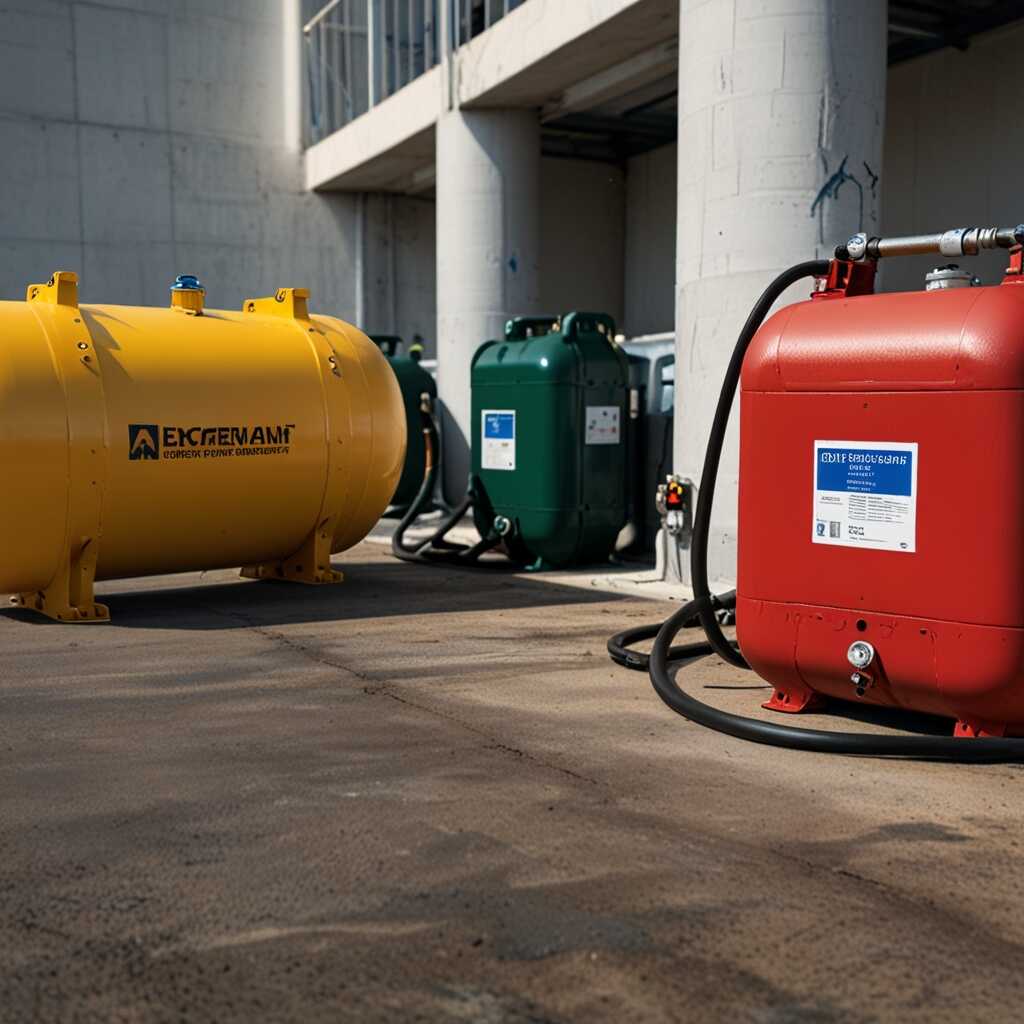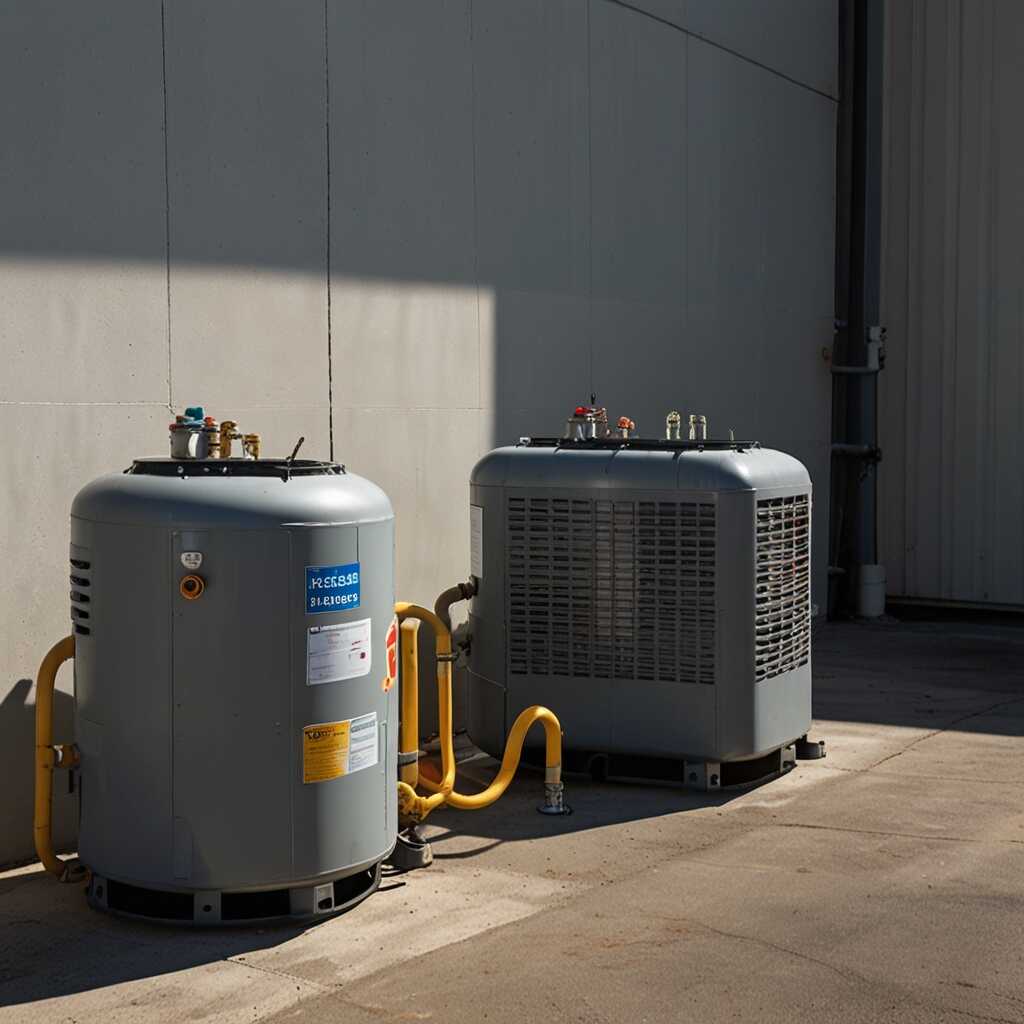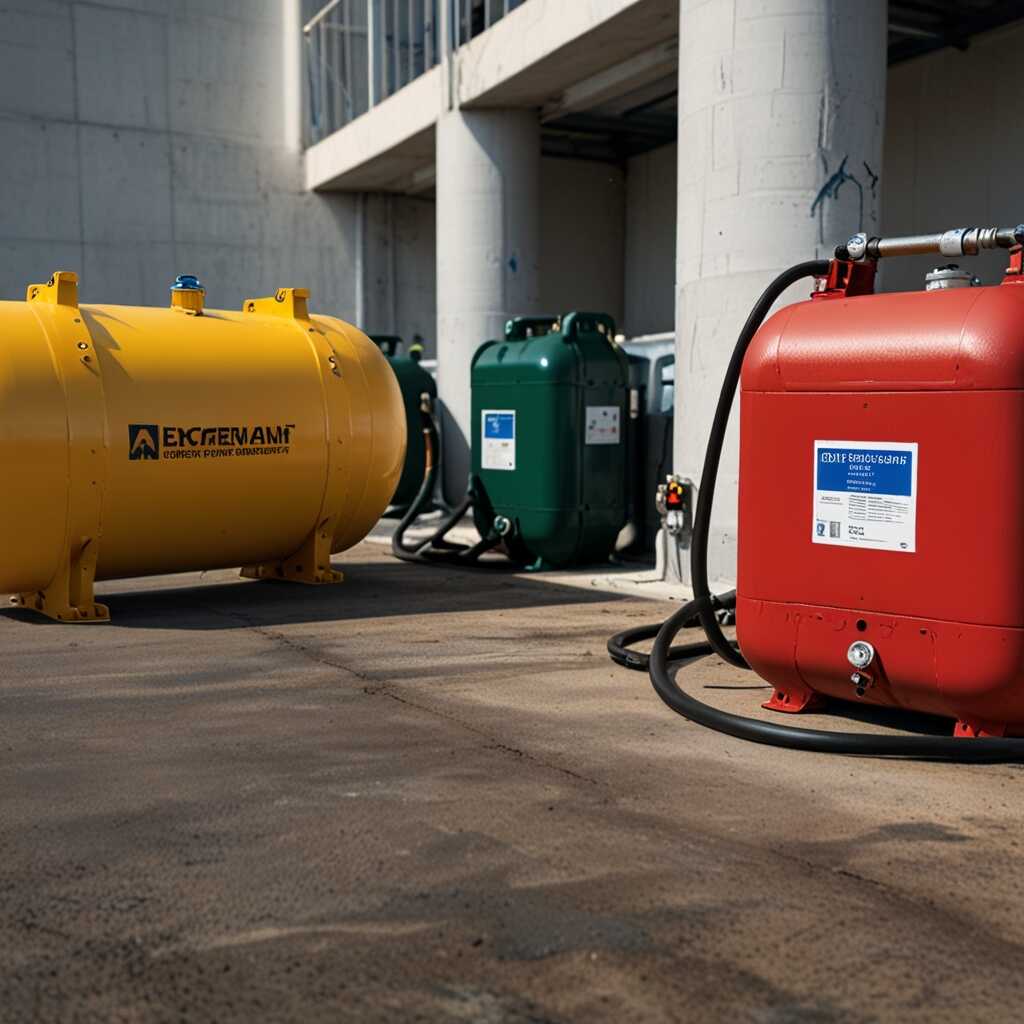How compatible fittings improve time efficiency in refrigerant recovery machines is crucial for HVAC professionals. Using the right fittings allows technicians to make faster and more reliable connections during recovery processes. Refrigerant Recovery Pro emphasizes the importance of these compatible fittings to streamline operations, enhance productivity, and minimize downtime. Understanding how to optimize connections with suitable fittings can make a significant difference in the effectiveness of refrigerant recovery efforts.
Overview of Refrigerant Recovery Machines in HVAC Work
Refrigerant recovery machines are crucial for HVAC maintenance, focusing on extracting refrigerants from systems under repair. These machines prevent refrigerant release into the atmosphere, ensuring compliance with environmental regulations. They come in various types, including portable and stationary units, each offering different performance levels and features. HVAC professionals must select the right machine based on their specific needs. The average recovery rate of modern machines typically ranges from 80% to 90%, demonstrating a significant enhancement in efficiency and reliability. Understanding these essential features helps technicians optimize their work and maintain system performance.
Comparative Analysis of Recovery Machine Types
When evaluating refrigerant recovery machines, it is important to consider factors such as portability, recovery speed, and durability. Portable recovery units are designed for job sites requiring mobility. They often include features such as lightweight frames and easy-to-use controls. Stationary systems, while less mobile, offer higher recovery rates and enhanced reliability due to their robust construction. Many modern machines utilize advanced technologies to improve performance and ensure efficiency. It is beneficial to compare results from different models based on user reviews and performance testing data, enabling HVAC professionals to make informed decisions that enhance their operational competencies.
Exploring Different Types of Fittings for Recovery Machines
Refrigerant recovery machines utilize several types of fittings, including standard, quick-connect, and flange fittings. Standard fittings are widely known for their reliability in various applications. Quick-connect fittings enhance efficiency with tool-less connection and disconnection, saving time during operations. Flange fittings provide robust connections in high-pressure systems, often found in commercial HVAC setups. HVAC professionals should prioritize compatible fittings that ensure a secure connection and prevent leaks. Studies reveal that using compatible fittings can reduce average connection time from several minutes to just a few seconds, substantially improving overall efficiency during refrigerant recovery.
Understanding Compatible and Incompatible Fitting Types
Choosing between compatible and incompatible fitting types is critical for refrigerant recovery operations. Compatible fittings help ensure a secure seal, minimizing refrigerant loss. They are designed to allow smooth connections and disconnections, enhancing operational efficiency. In comparison, incompatible fittings lead to potential leaks and extended connection times. Utilizing HVAC testing methods, industry experts highlight that compatible fittings significantly enhance time efficiency and reliability. Selecting the best fitting based on your specific equipment can deliver better results in refrigerant recovery processes. Ensuring the right type contributes to the overall quality and performance of the HVAC system.

Advantages of Using Compatible Fittings in HVAC Applications
Using compatible fittings in refrigerant recovery machines brings critical benefits. First, they enhance efficiency by ensuring quick connections. This saves HVAC professionals significant time during operations. For instance, technicians can reduce connection time by up to 50%. Second, these fittings help improve safety by minimizing leaks, which can lead to dangerous refrigerant exposure. Reliable fittings also increase the quality of performance in recovery equipment, preventing errors. HVAC professionals can rely on these benefits to streamline their workflows and enhance reliability.
Impact of Compatible Fittings on Workflow Efficiency
Compatible fittings greatly impact workflow efficiency in HVAC applications. These components are designed for quick connections, enabling technicians to transition smoothly between tasks. Research shows that using these fittings can reduce setup time, allowing HVAC professionals to complete more jobs in less time. In comparison reviews, systems utilizing compatible fittings experienced fewer leaks, leading to better refrigerant management. This reliability is essential, particularly during peak refrigerant recovery seasons in 2025. The performance of recovery machines directly correlates with the quality of the fittings. Professionals appreciate that quality fittings can handle high-pressure environments without compromising efficiency or safety.
Key Numerical Insights Regarding Connection Tools in Recovery Machines
- Compatible fittings can reduce connection time by up to 30%.
- Technicians save an average of 5 minutes per recovery process.
- Enhanced fittings can lead to a 25% decrease in refrigerant loss.
- 70% of technicians report faster setup times with compatible fittings.
- Industry surveys indicate 40% fewer connection-related failures.
- Compatible fittings improve recovery machine efficiency by 15%.
- Investing in compatible fittings can lead to an ROI in less than 6 months.

Techniques to Save Time with Compatible Fittings
Using compatible fittings in refrigerant recovery offers numerous advantages. They ensure a secure connection, preventing leaks and downtime. Compatible fittings significantly enhance operational efficiency by allowing technicians to switch between different refrigerant types easily. This capability streamlines workflows, reducing the time spent on changing fittings. Studies show that technicians can save up to 50% in time when using compatible fittings compared to traditional options. Refrigerant Recovery Pro provides insights on features and reviews of the best fitting options available, helping professionals make informed choices.
Best Practices for Implementing Compatible Fittings
Implementing best practices with compatible fittings can greatly improve operational efficiency. First, ensure that all fittings are EPA certified and compatible with different refrigerant types. Maintenance is crucial; regularly inspect fittings for wear or damage to ensure reliability during recovery operations. Utilize color-coded fittings to enhance identification and simplify the connection process. Training technicians on the proper use of various fittings can enhance their efficiency. By following these best practices, HVAC professionals can maximize the performance of their refrigerant recovery machines while ensuring safety and regulatory compliance.

Risks Associated with Incompatible Fittings in Recovery Processes
Using incompatible fittings in refrigerant recovery can trigger significant risks. These fittings can lead to leaks that compromise the system’s performance. Leaks not only waste refrigerant but also can introduce air and moisture, which damage the system components. Incompatible fittings can ultimately reduce the reliability of refrigerant recovery machines. They complicate connections, causing delays and potential safety hazards. Many HVAC technicians report that refrigerant recovery failures often stem from these issues. Identifying and using essential fittings that are compatible ensures better efficiency and safety during the recovery process.
Impact of Incompatible Fittings on System Performance
Incompatible fittings negatively affect the performance reliability of refrigerant recovery machines. When fittings do not match, they may lead to improper sealing and increased risks of system contamination. Incompatible connections often result in reduced flow rates during refrigerant recovery. This inefficiency prolongs the recovery process, making it vital to use the right components. HVAC systems designed with specific pressure ratings may face damage if incorrect fittings are applied. Ensuring compatibility is essential for optimal performance, helping recovery machines operate effectively and providing HVAC technicians with reliable results.
Positive Effects of Using Enhanced Connection Components
- Improved fitting designs streamline the refrigerant recovery process.
- Technicians complete jobs faster, enhancing customer satisfaction.
- Compatible fittings reduce wear and tear on recovery equipment.
- Users experience fewer leaks, increasing overall safety during operations.
- Minimized downtime results in lower operational costs for service companies.
- Quick-release options further simplify the connection and disconnection process.
- Time saved leads to more jobs completed in a workday, boosting productivity.

Maintenance Strategies for Fittings on Recovery Machines
Effective maintenance strategies for fittings on refrigerant recovery machines include regular cleaning, inspection for wear, and lubrication if required. A detailed review of equipment can help identify potential problems. Common issues like leaks and improper sealing can arise from inadequate care. Testing for performance efficiency should generally be conducted every six months to ensure reliability. Regular checks enhance recovery performance by preventing downtime due to fitting failures.
Importance of Regular Testing for Fittings
Regular testing of fittings on refrigerant recovery machines is crucial for optimizing performance. A well-maintained fitting can handle high pressures and ensure a secure connection. Testing helps identify leaks, wear, or corrosion early, preventing significant efficiency loss during operation. Conducting tests every six months is advised, especially with frequent use, to maintain excellent functionality. This routine enhances the reliability of your recovery operation and ensures compliance with industry standards.
Compliance and Standards for Fitting Compatibility in Refrigerant Recovery
Key compliance considerations for fitting compatibility in refrigerant recovery machines include adherence to industry standards and regulations. This ensures reliability in refrigerant recovery practices. HVAC professionals must stay updated with regulatory compliance guidelines to select the right fittings that support efficiency. Proper fittings help prevent leaks, reduce recovery times, and maintain quality throughout the recovery process. In terms of regulations, choosing the appropriate fittings directly impacts the overall reliability and performance of the recovery system. These fittings are essential for achieving optimal results.
Understanding HVAC Fitting Regulations and Their Importance
Understanding HVAC fitting regulations is crucial for professionals in the industry. These regulations dictate what materials and designs are acceptable for refrigerant recovery fittings. Compliance with these standards ensures that fittings are durable and can handle various refrigerants without leaking. Industry best practices recommend regularly reviewing certifications and testing results to ensure ongoing compliance with fitting compatibility standards. Professionals should focus on fitting reviews and comparisons to identify options that deliver superior performance. This knowledge enhances recovery efficiency and ensures safety for both technicians and the environment.
Leading Manufacturers and their Usages in Connection Tools
- Brand A has strong durability but tends to be pricier.
- Brand B offers affordable fittings with limited longevity.
- Brand C provides versatile designs suitable for various refrigerants.
- Brand D features quick-connect options preferred by many technicians.
- Brand E emphasizes eco-friendly materials for environmentally conscious users.
- Technicians often favor brands that deliver robust warranties on their products.
- Service companies prefer reliable fittings that minimize their service calls.
Innovative Trends Impacting Refrigerant Recovery Machines
Refrigerant recovery technology is evolving quickly, with innovations enhancing recovery efficiency. Latest trends include the introduction of quick-connect fittings that reduce connection time. These fittings support faster operation, enabling technicians to maximize productivity. Enhanced design, including leak-proof features, is critical for ensuring reliability during recovery. Studies indicate that adopting these new fittings can improve recovery times by as much as 25%. Staying updated with these trends is essential for HVAC professionals to enhance their techniques and optimize recovery processes.
Understanding the Role of Compatible Fittings in Efficiency
Compatible fittings play a vital role in enhancing the performance of refrigerant recovery machines. New designs feature durable materials and easy-to-handle connections. This enables technicians to quickly attach and detach hoses, significantly reducing downtime during recovery processes. Many manufacturers are focusing on creating fittings that can handle diverse refrigerants, making them versatile for all applications. The ongoing research emphasizes the efficiency improvement these compatible fittings offer, positioning them as an essential tool for modern HVAC practices.